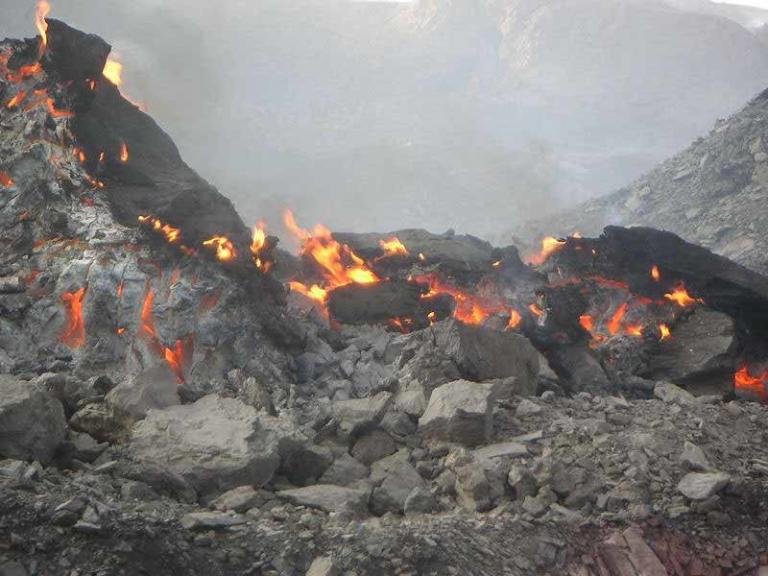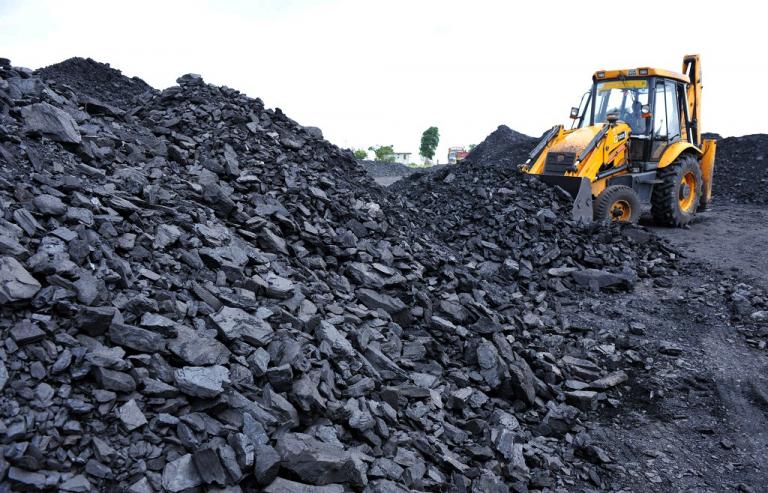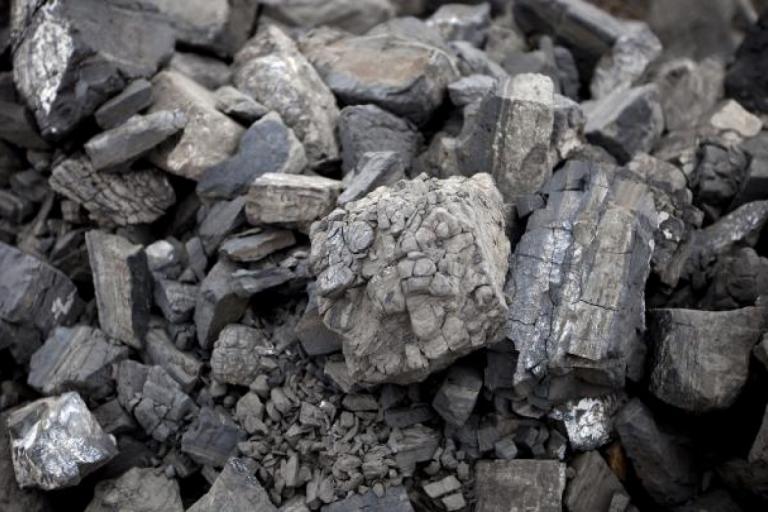Coal in Xinjiang
8 min readCoal is praised as”black gold”, and “food for industry”. Since the eighteenth century, coal has been used by human as one of the main energies.
Xinjiang is a large coal resource province. The total coal reserves buried under the predicated depth of 2,000m are 2.19 trillion tons, accounting for 40.6% of China. Xin jiang is an important energy continuing area and strategic energy reserve district in China. Except the Bortala Mongol Autonomous Prefecture, other regions, prefectures and cities of Xinjiang all have some storage of coal resources. Among them, the coal reserves of Urumqi, Changji Hui Autonomous Prefecture, the counties and cities directly under the jurisdiction of lli Prefecture, Tacheng Prefecture, Altai Prefecture, Karamay City in northern Xin jiang, Turpan Prefecture and Kumul Prefecture in Eastern Xinjiang, and Bayingolin Mongol Autonomous Prefecture in southern Xin jiang and other regions, prefectures, cities in Xinjiang account for 98% of the total predicted coal reserves of Xinjiang; the coal reserves of Aksu Prefecture, Kashgar Prefecture, Kizilsu Kirghiz Autonomous Prefecture and Hotan Prefecture in southern Xinjiang just account for 2% of the total expected coal reserves of Xinjiang, the coal reserves of Kashgar Prefecture, Kizilsu Kirghiz Autonomous Prefecture and Hotan Prefecture just account for 0.06% of the total predicted coal reserves of Xinjiang.

According to the comprehensive analysis of the predicted coal reserve,coal seam storage conditions,exploration and development conditions,and development potential,Urumqi,Changji Hui Autonomous Prefecture,counties and cities directly under the jurisdiction of Ili Prefecture,Tacheng Prefecture in Northern Xin jiang and Turpan and Kumul in eastern Xin jiang are rich coal resources areas;Bayingolin Mongol Autonomous Prefecture,Aksu Prefecture in Southern Xinjiang and Altai in northern Xin jiang are relatively rich coal resources areas;Kashgar Prefecture,Hotan Prefecture,Kizilsu KirghizAutonomous Prefecture in southern Xin jiang are remote coal shortage areas of Xin jiang.
The coal resources in Xinjiang are mainly located in Junggar Basin(623.5 billion tons)Turpan-Kumul Basins(535 billion tons)and Ili Basin(477.2 billion tons).The ascertained coal quantity is 97.7 billion tons.Among the kept resource reserves,jet coal accounts for 73%,non-caking coal accounts for 17%and gas coal accounts for 7.5%,and the rest coals totally only account for 2.5%.
The main features of coal in Xinjiang are as following:
Firstly,Xin jiang has abundant and highly distributed and concentrated coal resources,showing a pattern of north being poor and south being rich.The predicted amount of coalresources in Xinjiang is 2.19 trillion tons,accounting for up to 40.6%in China,and the resource distribution area is 76,400km².By the end of 2011,the proven coal reserve in Xinjiang is 250 billion tons,ranking third in China.89.2%of Xinjiang’s coal resources are concentrated in the northern areas,among which the four prefectures of Turpan,Changji,i and Kumul totally account for 76.7%.
Secondly,Xin jiang has excellent coal mineralization conditions and is suitable for theconstruction of large coal mines.Xin jiang has a total of 24 predicted coalfields whose amount of resources exceeding 10 billion tons,which together account for 98%of the total coal in Xinjiang.Among them,there are five coalfields(East Junggar Coalfield,Shaer Lake Coalfield,Yining Coalfield,Turpan Coalfield and Danan Lake-Wutonwozi)with predicted amount of resources over 10 trillion tons,which occupies 60%of Xin jiang’s total predicted amount of resources.Other than that,there are 8 coalfields of 40 billion to 100 billion tons and 11 coal fields with predicted amount of resources of 10 billion to 40 billion tons.Coal resources mainly distribute in northern and eastern parts of Xinjiang,whose resources amount account for about 94.7%of the total predicted amount of Xinjiang.Among them,the 12 relatively independent coal fields, East Junggar Coalfield, and Yining Coalfield are three super coalfields with a predicted amount of over 300 billion tons; in particular, Turpan-Kumul Coalfield has a predicted amount of more than 500 billion tons and is a world-class coalfield. East Junggar Coalfield, Hoxtolgay Coalfield and Santanghu Coalfield all have a predicted amount of more than 100 billion tons.
Thirdly, the coal quality in Xin jiang is generally good. The coals in Xin jiang are generally jet coal, non-caking coal, and low-coking coal with intermediary and low alteration, followed by gas coal, fat coal and coking coal of intermediary alteration. Among the predicted resource amount, about 95% has an ash content of less than 25%, about 47% has an ash content of less than 15% and about 16% has an ash content of less than 10%; about 96% have a sulphur content of less than 1.5% and about 80% have a sulphur contentof less than 1%. Xinjiang has a good natural condition of coal resources with thick coal layer, and the amount of long flame coal, non-caking coal and weakly caking coal accounted for 90.91% of total resources. Coal generally has the characteristics of low sulfur, low phosphorus, high volatile matter and calorific value. Meanwhile, coal has high reactivity suitable for gasification and indirect liquefaction, and is the high-quality coal for power, coal chemical industry and coal oil. The proven and explored coals mostly have shallow coal seam occurrence, multi-mineable coal seams, thick primary mineable coal layer and good mining conditions. Calculated according to the annual coal output and recovery rate, the existing reserves at present can continue to be mined for 700 years.
Xinjiang has put forth to build four bases of coal power, coal chemical industry and coking industries in East Junggar, lli, Turpan-Kumul and Kubai as the main bases for coal power industry,”transmitting the coal from the west to east”and coal gas in Xin jiang; put forth to strengthen the construction of 13 key diggings and 11 general diggings in Urumqi, Sandaoling of Kumul, Ewirgol, Liuhuang Gully, Hoxtolgay and build ten-million-ton mines and hundred-million-ton large-scale diggings. Currently,82 newly built, rebuilt and expanded coal projects in East-Junggar and Turpan-Kumul have started construction and the production capacity will reach 165 million tons.
Turpan-Kumul Coal Field
The predicted coal resources amount of Turpan-Kumul Coal Field is 570.8 billion tons accounting for 12.5% of the predicted coal resources amount of China and 31.7% of the predicted coal resources amount of Xinjiang, mainly distributed in mines in Sandaoling, shaer Lake, Danan Lake, Santang Lake, Naomao Lake, Yema Spring and Barkol. Turpan-Kumul Coal Field mainly has coal of high calorific value, with the advantages in location and transportation, and it will develop into a main base of “transporting coal from west to east”, and meet the demand for coal in local production and life.
East-Junggar Coal Field
East-Junggar coal field is the largest integrated coalfield in China and the main coals are long-flame coal, non-caking coal and weakly caking coal, and the coal field mainly consists of the Wucaiwan Mine, Xihei Mountain Mine, Dajing Mine and General Temple Mine with a predicted coal amount of up to 390 billion tons. The overall plans of Wucaiwan Mine, Xihei Mountain Mine and Dajing Mine have been approved by China. East-Junggar Coal Field will focus on the development of coal power and coal chemical industries, and become the main front of the “West-East Electric Power Transmission Project”.
East-Junggar coal power and coal chemical industry base is oriented as an integrated coal power and coal chemical industry base with modern coal chemical products and coal power as the main business, and mainly develops coal, coal power, coal oil, coal-based olefins and coal-based natural gas and other coal products. It develops properly coal synthesis ammonia and urea products according to the demand of synthetic ammonia, urea by surrounding agricultural production.

li coalfield
Coal resources of Ili coalfield are mainly concentrated in the lli River valley, mainly including South lli coalfield, North lli coalfield, Nilka coalfield and Zhaosu coalfield with a total surface area of about 5,800km-and a predicted resource amount of 300.9 billion tons forecast resources. Now the proven amount of coal resources is nearly 30 billion tons, accounting for nearly 1/3 of the total proven coal resources amount in Xinjiang, and Ili coalfield is one of seven largest coals chemical industry bases in China. The development objective of lli coalfield is to focus on developing the coal production base of coal gas and coal chemical in West-East Natural Gas Transmission, and meet the demand for coal in local production and life.
lli coalfield has a variety of coals, coupled with abundant water resources and port advantage, it will focus on the development of coal power and coal chemical industry suchas coal olefins, coal gas, coal oil, and construct large coal ammonia, urea production plant according to the requirement of agricultural production. At present, the main investments include the coal oil and coal olefins projects of Xinwen Mining Group, coal power and coal liquefaction projects of Kailuan Group and the coal and coal coking projects of State Development and Investment Corporation.
Kubai Coal Field
Kubai coal field consists of Ehuobulake mine in Kuqa, east mine in Baicheng, west mine in Baicheng and Aai mine with a total proven and predicted resource amount of 374.8 billion tons and the mine will be built into a coal and power supply base for Aksu Prefectutre, Kizilsu Prefecture and Kashgar Prefecture; At the same time, coupled with natural gas, Kubai coal field will build a methanol-made olefins project. The development goal of Kubai coal field is to meet the demand of production and life coal in the four prefectures of Southern Xinjiang and to develop the production of rare coals such as coking coal. Kubai base has a quality coal,a complete type of coals with low content of dust andsulphur and high heating value, and there are various types of coals such as gas coal, fat coal, coking coal and lean coal, and these coals are most suitable for multiple uses for coking, power, chemical industry and civil use.
Other areas of Xin jiang such as Urumqi and Changji Prefecture are also the centralized distribution area of coal resources in Xin jiang, and coal reserves in these areas account for about 1/4 of that in Xinjiang. Among them, just the total proven coal reserves in the southern mountains of Urumqi and Changji Prefecture are close to 50 billion tons, and the finely explored reserves reach 9.2 billion tons, and that the coal seam is thick with various coals and quality coal. Xinjiang plans to develop coal chemical industry in Karamay-Hefeng region, and in the near future mainly develops methanol and olefin and plans to construct coal oil at a specified future date; build coal-fertilizer project in Hutubi, Shihezi, Shawan and Wusu; actively expand production capacity of coke, downstream coking processing projects in Fukang region.
Some small coal-bearing basins of structural basin-type also distribute in the western and southern margins of Tarim Basin, such as Tuoyun Basin in Ulugqat County, small basins sporadically distributing in Akto-Yecheng, Duwa-Buya basin and Fu Lu-Wulusaike basin in Hotan Prefecture, and Jianggeshay-Aiyi mountain basins in Qiemo County-Ruoqiang County. But these small basins have poor coal forming conditions, fewer seams, low content of coal bearing, and are very unstable, these areas belong to coal shortage areas with small mineable coal, which do not form the scale development and are difficult areas for coal exploitation and utilization.
Xinjiang coal industry is flourishing and has begun taking on the road of becominga new energy highland of China in the 21st century.









